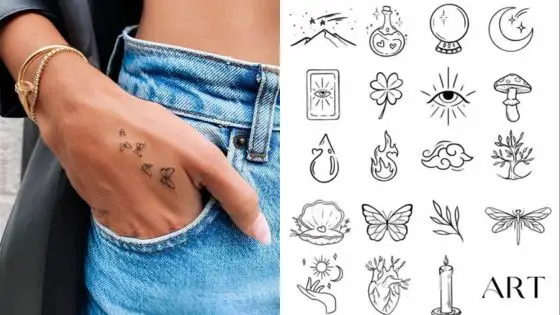Looking for the best drawing materials to enhance your art? This article highlights the must-have tools for artists, including pencils, papers, and more. Discover what you need to elevate your drawing skills.
Key Takeaways
Quality drawing pencils and paper are essential for artists, enabling precise control and enhancing creative expression.
Investing in versatile erasers and sharpening tools is crucial for refining artwork without compromising quality.
Proper preservation and storage solutions, including fixatives and portfolios, are vital for maintaining the longevity and integrity of completed artworks.
Essential Drawing Pencils
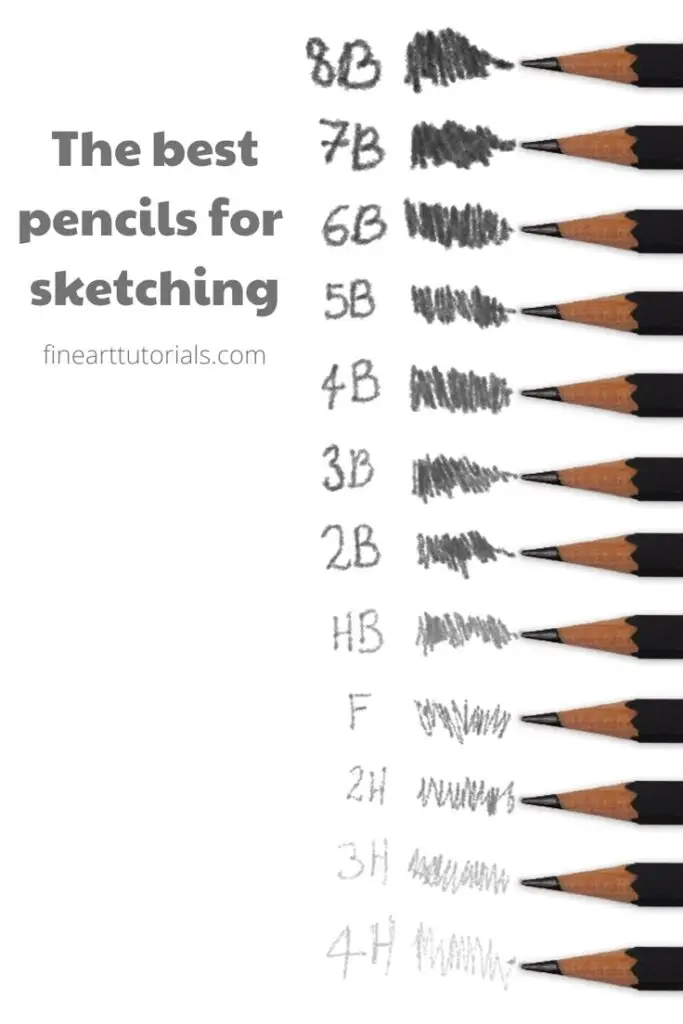
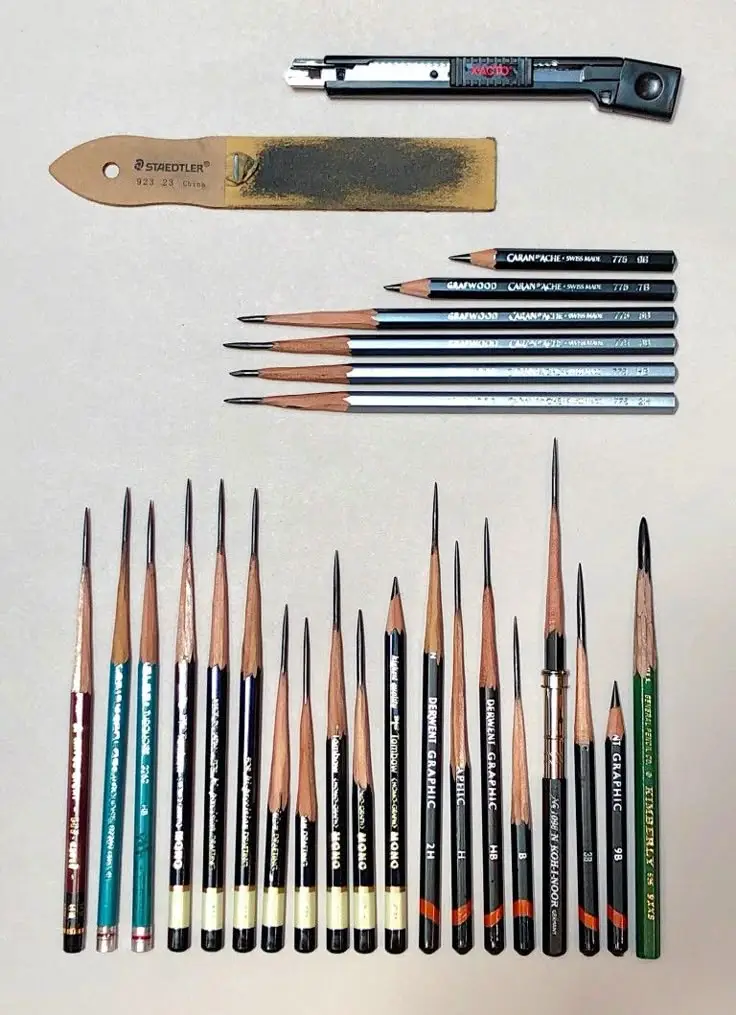
Pencils are the cornerstone of any artist’s collection of tools. Dependable brands, such as Derwent Graphic Pencil, provide consistent quality and assist in creating distinctive styles during the drawing process.
To discover pencils that meet your particular requirements for drawing, it is beneficial to try out various brands. Choosing either a complete set or individual pencils becomes more rewarding when you have knowledge about the diverse grades of graphite available and how they can improve your experience with drawing.
Pencil Sets
A set of drawing pencils offers a good range of graphite grades, from harder (9H) to softer graphite (6B). This variety supports diverse mark-making techniques, fostering creativity and detailed, expressive graphite drawings.
A pencil set keeps you prepared for any drawing situation, providing the right tools for precision and control, especially with harder graphite pencils.
Individual Pencils
Artists often opt to buy pencils individually, which enables them to choose exact grades such as 2H, HB, 2B, and 4B. These varying grades provide a range of hardness and darkness that contribute to the depth and detail in their work.
By selecting individual pencils rather than entire sets, artists can avoid the annoyance of having surplus pencils they don’t need. Tailoring their selection to include different grades that align with their artistic preferences can significantly improve both the quality of their artwork and their personal satisfaction with it.
Choosing the Right Drawing Paper
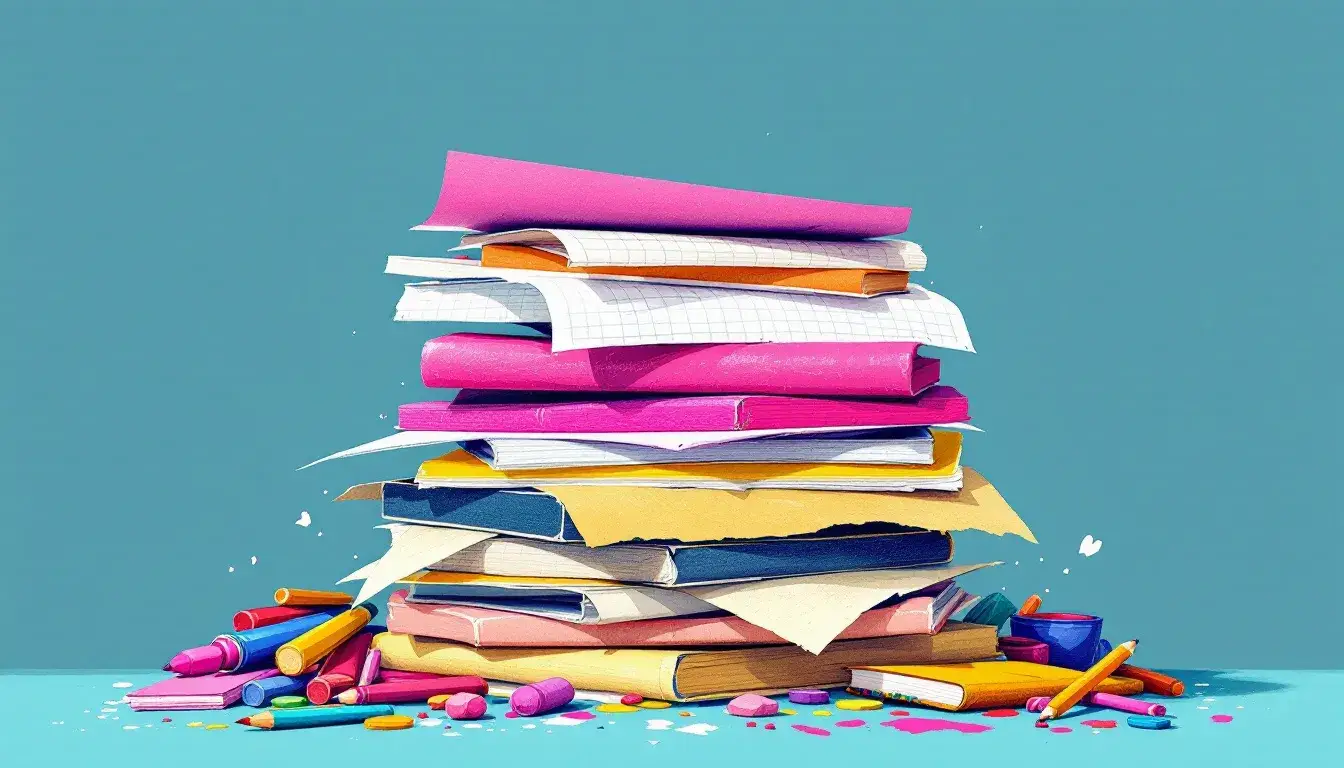
Choosing the right drawing paper is crucial. Consider texture, weight, and acid-free properties to ensure your artwork’s longevity. Heavyweight paper prevents bleeding and supports various media, offering versatility.
Try different textures and finishes to find the perfect surface for your style. Arches Watercolor Paper, for instance, is highly recommended for its quality and durability.
Sketchbooks
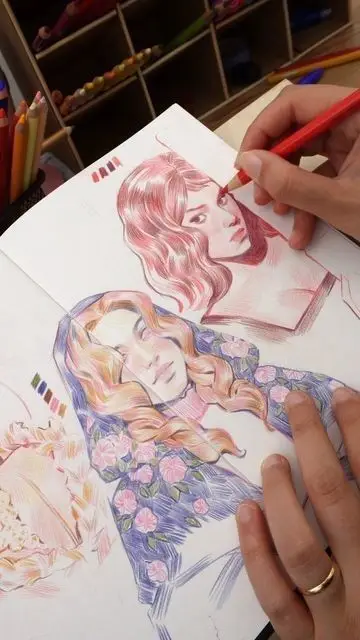
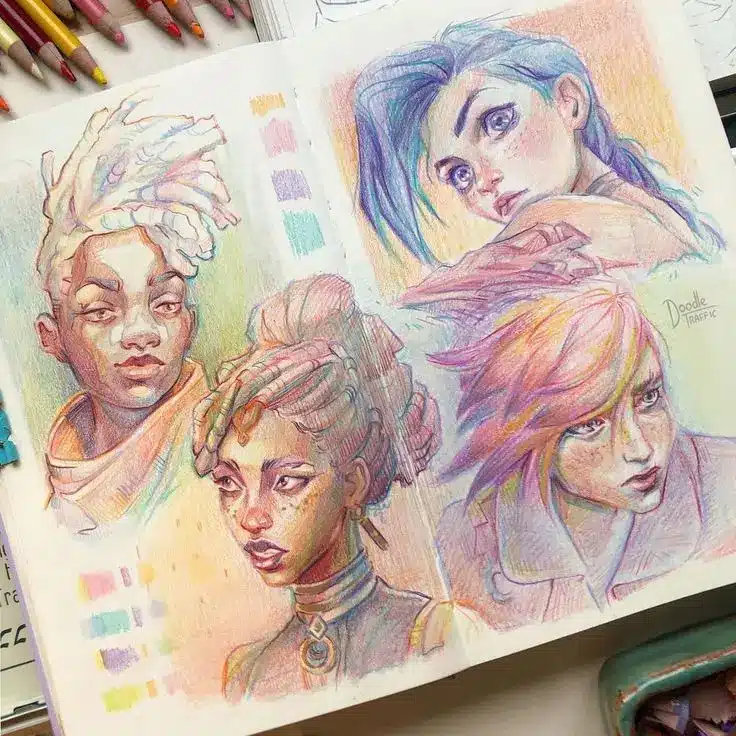
Maintaining a sketchbook is crucial for consistent practice and artistic discovery. Utilizing it frequently encourages creative growth and progressively refines one’s abilities in drawing, offering an opportunity to try new things free from the obligation of finishing a work.
For those committed to advancing their artistic expertise, keeping a sketchbook serves as an invaluable tool. It not only documents development over time, but also offers room for impromptu bursts of creativity.
Specialized Papers
Specialized drawing papers cater to various needs. Charcoal paper has a textured surface that enhances charcoal application without smudging. Other types, like drawing and Bristol paper, offer unique benefits for different techniques.
The right paper type significantly impacts your artwork’s final appearance. Experimenting with different types helps find the perfect match for your medium and style.
Must-Have Erasers for Artists
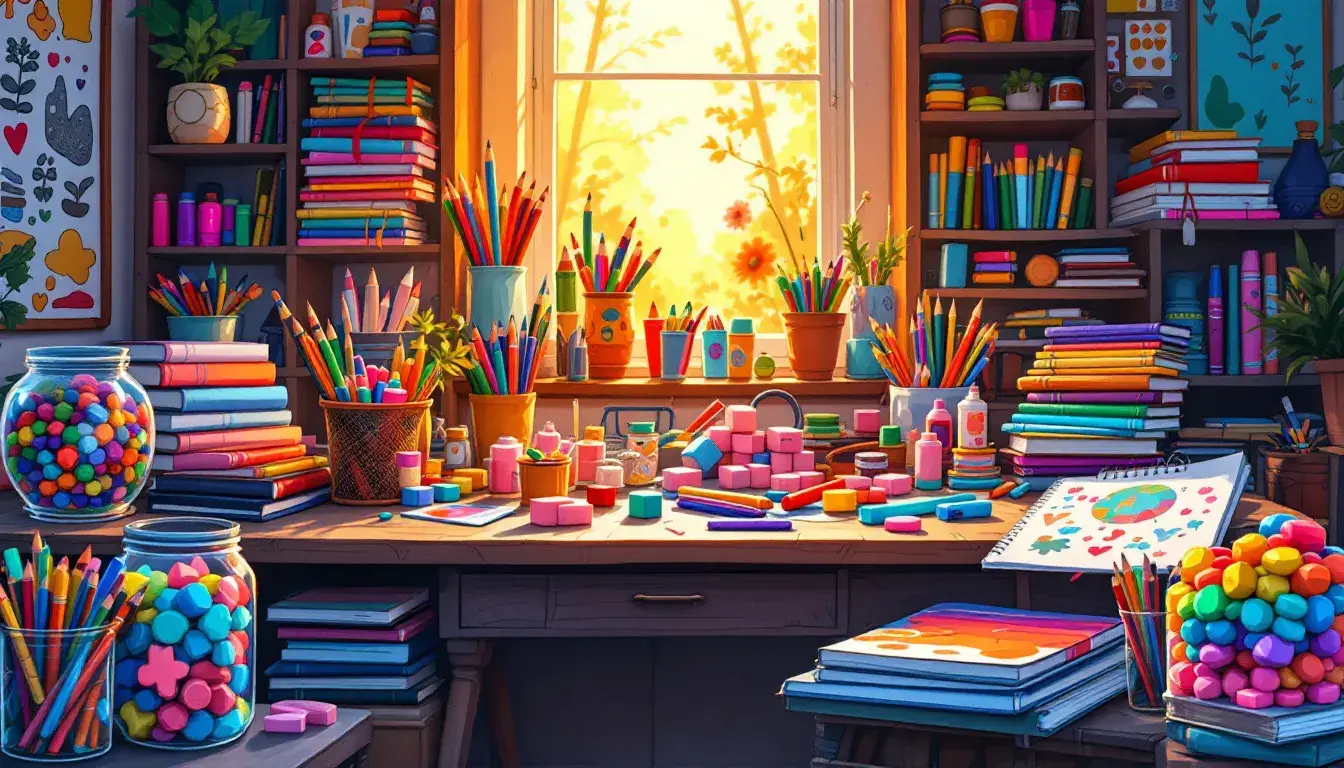
Erasers play a critical role in making corrections and improvements to drawings, with each variety contributing distinctively to the excellence of the artwork.
When choosing erasers, it’s essential to consider both precision and adaptability. For intricate tasks, the Tombow MONO Zero Eraser is exemplary. In contrast, for generating artistic effects, one can precisely shape the Tombow MONO Knock Stick Eraser.
Kneaded Eraser
A kneaded eraser is preferred for its pliability and delicate approach. It differs from conventional erasers in that it softly picks up graphite, making it ideal for intricate modifications. The ability to shape the eraser offers precise management when eliminating graphite.
Such adaptability renders the kneaded eraser indispensable for creating nuanced highlights and alterations while preserving the integrity of the surface without inflicting harm.
Plastic Erasers
Plastic erasers are adept at eliminating marks made by pencils, ensuring that they do so without leaving behind any remnants. This is vital when correcting and enhancing work to preserve the drawing’s original quality.
These erasers contribute significantly to maintaining the cleanliness and sharpness of your artwork, avoiding blurs and flaws. They are indispensable for producing drawings that look sleek and exhibit a professional level of finish.
Importance of a Good Pencil Sharpener
Maintaining your pencils in top condition is crucial, and it hinges on having a good pencil sharpener. Substandard sharpeners have the potential to damage your pencils, leading to annoyance and unnecessary waste. You can opt for either manual or electric pencil sharpeners, each providing distinct benefits.
Selecting an appropriate sharpener is key to keeping your pencils finely honed, which allows you uninterrupted concentration on your artistic endeavors.
Electric Sharpeners
Electric sharpeners are designed for swift and uniform pencil sharpening, providing both quickness and effectiveness. These devices optimize the use of materials. They can occasionally trap smaller pencils.
It is not advisable to use electric sharpeners with colored pencils because the wax in these pencils could accumulate inside the sharpener and hinder its functionality.
Manual Sharpeners
Manual sharpeners offer simplicity and control, popular among many artists. They are lighter and portable, ideal for artists on the go, allowing for precise sharpening, especially for softer colored pencils like Prismacolor Premier.
A reliable manual sharpener ensures your pencils are always sharp and ready for detailed work.
Charcoal and Conté Crayons
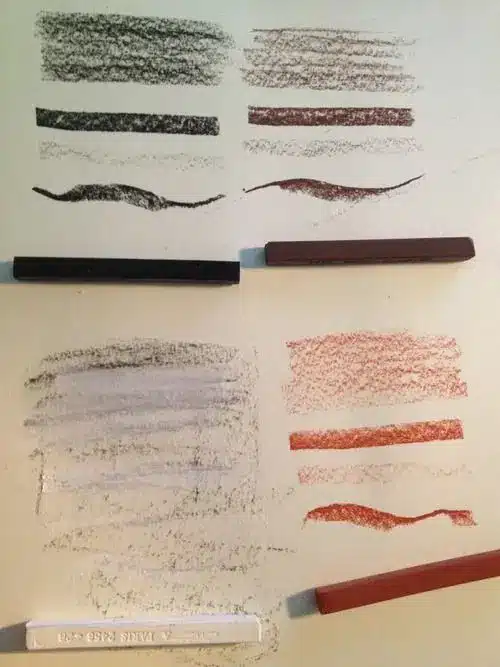
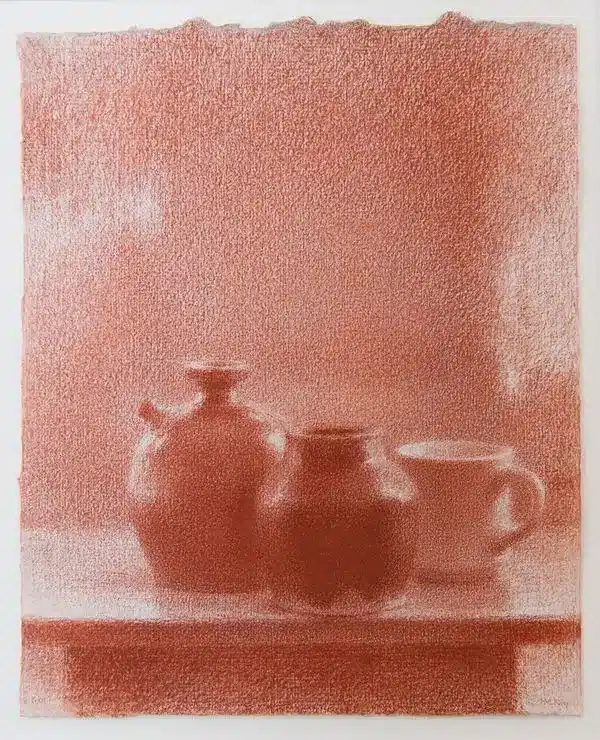
Utilizing charcoal and Conté crayons can provide a diverse array of marks and styles for drawing, presenting considerable versatility. Charcoal is available in different forms such as willow, vine, and compressed, all possessing their own unique characteristics. In contrast, Conté crayons offer a smooth application experience across an assortment of colors which are ideal for both detailed work and expressive drawings.
Gaining knowledge of the distinct qualities inherent to these mediums significantly boosts your ability to produce artwork that is both dynamic in its texturing and rich with expression.
Compressed Charcoal
Favored for its ability to produce rich textures and deep blacks, compressed charcoal is crafted from powdered charcoal mixed with binders. This combination yields a harder medium that excels in detailed work. To generate nuanced shifts in tone and texture, blending stumps are employed.
The adaptability of this medium is critical for realizing impactful contrasts and compelling marks within charcoal drawings.
Conté Crayons
Conté crayons are renowned for their smooth application and the vivid colors they produce, making them ideal for both intricate and bold drawings. They come in a range of hues, allowing artists to experiment with diverse styles and methods, capable of creating fine lines as well as wide swaths.
The distinctive characteristics of Conté crayons render them an essential component in the collection of tools available to any artist.
Blending Tools
Tools dedicated to blending play a pivotal role in achieving seamless transitions and heightened texture within drawings. Utilizing implements such as blending stumps and tortillons is instrumental for layering hues, crafting vivid tones, and instilling depth which markedly bolsters the quality of the drawing.
The integration of these blending instruments into your artistic routine can raise your creations to greater heights of elegance and intricacy.
Blending Stumps
Blending stumps, crafted from densely rolled paper, are crucial tools for smudging and shifting materials without transferring oils from one’s fingers. They excel in producing seamless transitions of shade, thereby improving texture and dimensionality. These instruments are particularly adept at blending dry media when a blending stump is utilized.
Tortillons
Blending stumps, which are closely related to tortillons but distinguishable by their tapered end, provide enhanced precision for blending and detailed work. They assist in keeping the workspace tidy by avoiding smudging from finger oils.
Tortillons improve your ability to create seamless transitions on a smooth surface while ensuring that the drawing area remains pristine and without smudges.
Colored Pencils
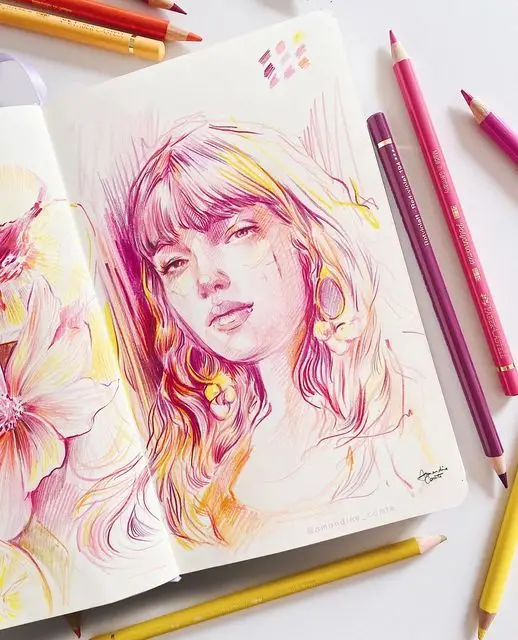
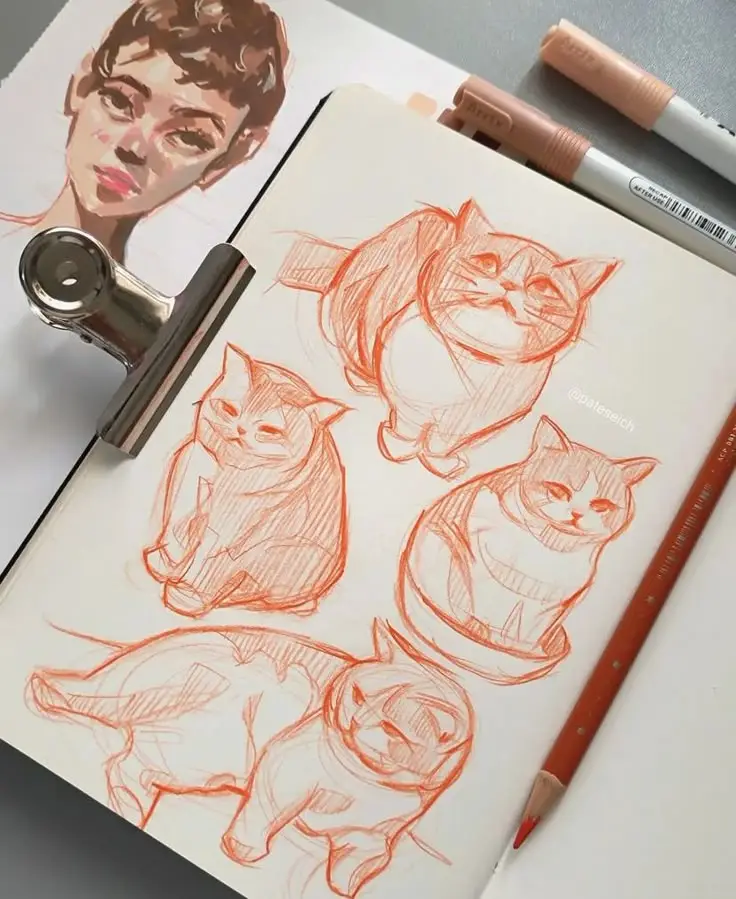
Colored pencils are essential for producing drawings with vivid hues and proficient blending capabilities. The quality of the pencils can greatly influence the intensity and layering potential in your artwork. It is highly advised to opt for top-tier brands such as Prismacolor Premier, Faber-Castell Polychromos, and Caran d’Ache Luminance due to their exceptional performance and resilience.
Purchasing premium colored pencils can enhance your art by providing deep, enduring colors that make your drawings stand out.
Prismacolor Premier
Renowned for their creamy, buttery texture, Prismacolor Premier pencils facilitate a seamless application and effortless blending. They excel at layering effectively to produce detailed drawings with substantial depth and intricacy.
Despite being somewhat fragile and prone to breaking if not handled with care, the vivid hues and superior blendability of Prismacolor Premier pencils render them an indispensable addition to any artist’s array of tools.
Faber-Castell Polychromos
Renowned for their oil-based cores, Faber-Castell Polychromos pencils provide superior quality and functionality. To attain a deep, intense color payoff, these pencils necessitate the application of multiple layers, enabling artists to construct colors that are both rich and lively. Due to their steadfast durability and uniform performance, they have become a trusted tool among professional artists.
Despite their higher cost, Faber-Castell Polychromos pencils justify the expense for individuals in pursuit of top-notch pencils capable of delivering extraordinary outcomes.
Caran d’Ache Luminance
Caran d’Ache Luminance pencils are of superior quality, crafted for artwork at a professional level. The wax-based composition of these pencils allows for exceptional layering and they possess a harder texture compared to Prismacolor Premier, making them ideal for intricate work that requires vivid hues on darker backgrounds.
Despite their high cost, the intense pigmentation and outstanding quality of Caran d’Ache Luminance pencils render them a preferred option among dedicated artists.
Ink and Drawing Pens
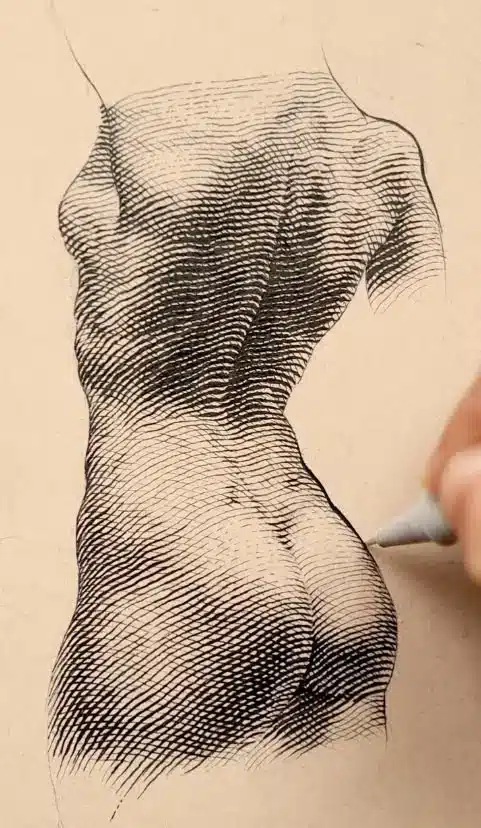
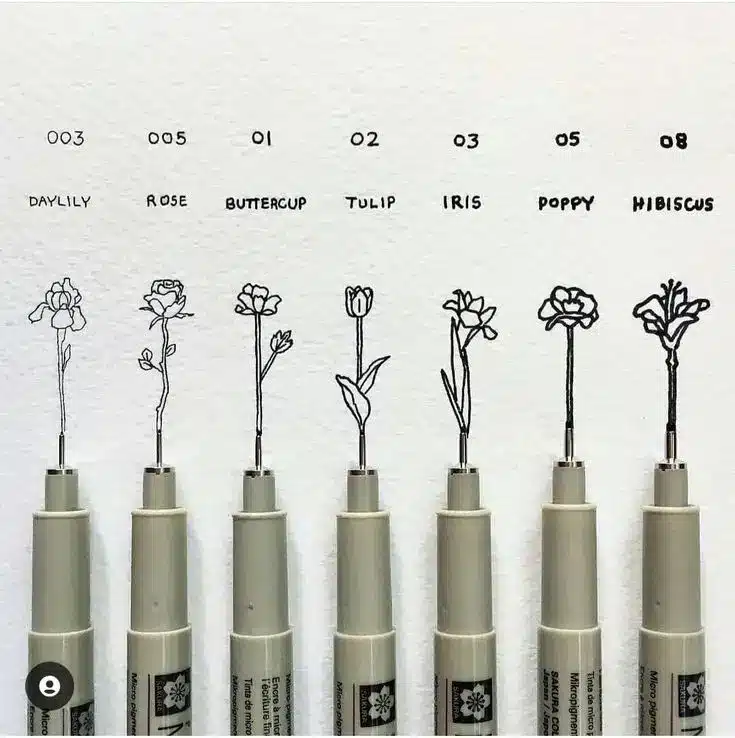
Essential tools for creating intricate and accurate artwork, ink and drawing pens come in several varieties such as fineliners, rollerball pens, and brush pens to cater to specific artistic requirements. Fineliners excel at delivering crisp, slender lines that dry swiftly and resist water, which makes them perfect for detail-oriented work.
Reputable brands such as Sakura Micron and Steadtler are often suggested due to their steadfast precision and dependability when it comes to technical drawing instruments. Adding these types of pens into your collection can greatly enhance the caliber of your lines, thereby elevating the standard of your overall artwork.
Technical Pens
Technical pens boast fine nibs and steady ink delivery, perfectly suited for complex designs and meticulous drawings. Their ability to preserve a constant line width guarantees uniformity and precision within your artwork.
Employing technical pens can elevate the cleanliness and exactitude of your lines, thus becoming an indispensable instrument for artists who concentrate on detail-oriented pieces.
Dip Pens
Dip pens provide artists with the ability to produce an array of line styles and widths, granting them considerable versatility and precision in their creations. The selection of a specific nib can impart a distinctive expressiveness to artwork, which is particularly advantageous for creating drawings that are both intricate and imbued with emotion.
Employing a dip pen can markedly improve your capacity to generate diverse line dimensions and styles, offering your artwork a lively and vivid character. This enhancement is especially beneficial in infusing your drawings with dynamic expression.
Fixatives and Protection
Utilizing fixatives plays an essential role in the preservation of artwork, particularly when dealing with mediums such as pastels and charcoal that are prone to smudging. The application of fixatives acts as a shield for your drawings, maintaining their condition by providing protection against dust, moisture, and UV rays. By integrating fixatives into your art routine, you can significantly improve the durability and excellence of your pieces, shielding them from possible harm.
Spray Fixatives
Spray fixatives present an easy way to apply a sturdy protective coating to completed drawings. It is best to use several light coats of spray fixative for uniform coverage and avoiding the formation of unattractive drips.
There are spray fixatives available that are water-based and do not contain toxic substances, which means they don’t emit harsh odors. This makes them an appealing option for numerous artists seeking safer alternatives.
Artwork Storage Solutions
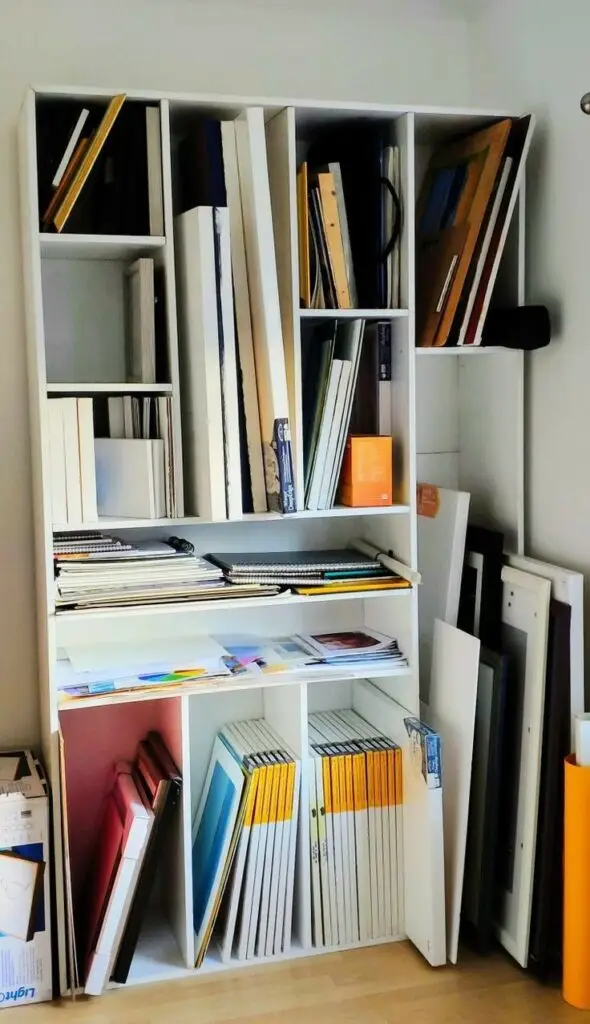
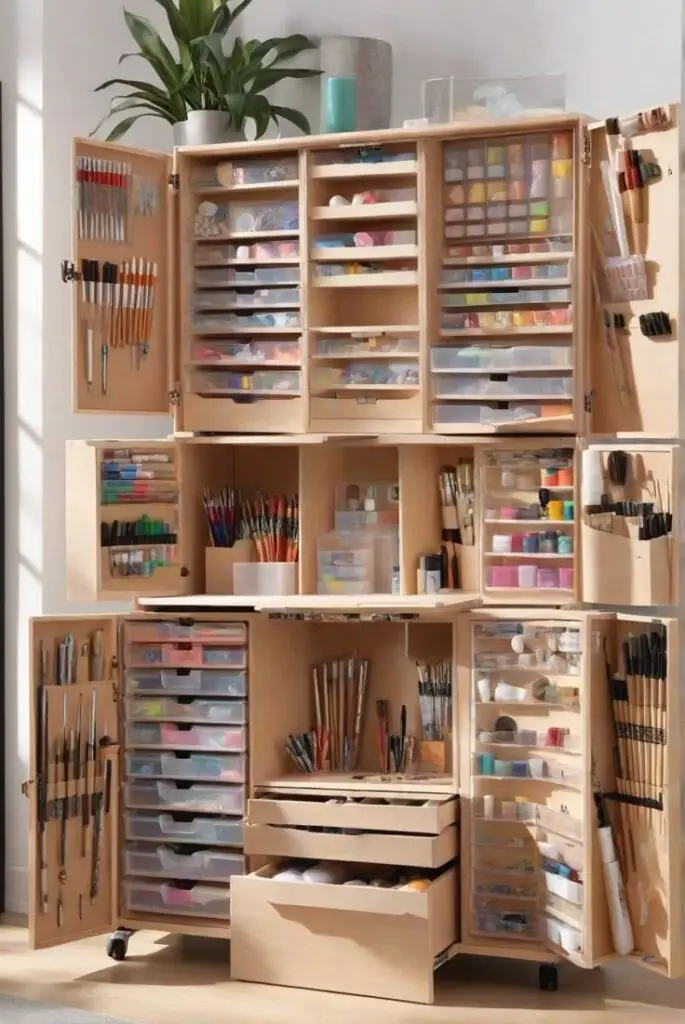
Ensuring that finished artworks are stored appropriately is crucial for maintaining their integrity and avoiding deterioration. By storing pieces upright, one can avert bending and harm to the works, and placing them in an environment that is both cool and devoid of moisture helps shield against damage caused by humidity. Committing to suitable storage methods guarantees the long-term preservation of your art in its immaculate state.
Portfolios
Organizing and securely storing your artworks is crucial, and a portfolio serves this purpose effectively. Opt for one that is sturdy to avoid bending the artwork and spacious enough to accommodate larger pieces. Alternatively, constructing a personalized portfolio can be an excellent approach to meet your particular requirements, guaranteeing both safe storage and professional presentation of your art pieces.
Protective Sleeves
To safeguard individual art pieces from harm and maintain their pristine state, it is essential to use protective sleeves. It’s important that these sleeves fit properly to avoid any movement or creasing of the artwork.
Incorporating acid-free materials in the production of these protective sleeves can significantly hinder the deterioration process of artwork as time passes, making them a crucial tool for every artist.
Summary
In essence, acquiring the appropriate tools and materials is essential for artists who aspire to produce artwork of a professional caliber. Every item, from indispensable drawing pencils and suitable paper to vital erasers and blending instruments, plays an integral role in both honing your artistic prowess and allowing you to convey your creativity. Exploring various brands and types of drawing supplies can aid you in discovering the optimal equipment that resonates with your distinct style and blending technique.
Bear in mind that investing in top-notch materials such as Prismacolor Premier colored pencils or Caran d’Ache Luminance pencils can make a considerable difference in both the brilliance and durability of your creations. Solutions for proper storage like portfolios and protective sleeves are key to preserving the pristine condition of your works over time. By embracing these fundamental tools and supplies, watch as your capacity for artistry increases dramatically.
Frequently Asked Questions
What are the essential grades of drawing pencils I should start with?
When embarking on your journey in drawing, it is crucial to equip yourself with pencils of grades 4H, 2H, HB, 2B, and 4B. These provide a comprehensive spectrum of hardness and darkness suited for various drawing techniques.
Having this assortment at your disposal will significantly improve the capacity to infuse your creations with both depth and intricate detail.
Why is it important to use acid-free drawing paper?
Using acid-free drawing paper is vital for preserving your artwork’s quality, as it prevents yellowing and deterioration, ensuring your creations last for years.
What is the advantage of using a kneaded eraser over a plastic eraser?
A kneaded eraser surpasses a plastic eraser in terms of its flexibility and the delicate touch it offers when applied to paper, which enables precise modifications without harming the surface.
Consequently, for artwork that requires meticulous attention to detail and strives for more pristine outcomes, a kneaded eraser is particularly beneficial.
How do I prevent my colored pencils from breaking easily?
Utilize a manual pencil sharpener to carefully hone your colored pencils, which aids in maintaining the integrity of their tips and minimizing the occurrence of breakage.
Adopting this method will help keep your pencils whole for an extended period, thereby improving the quality of your coloring endeavors.
What is the best way to store my completed artworks to prevent damage?
To prevent damage to your completed artworks, store them vertically in a dry, cool place and utilize portfolios or protective sleeves for added preservation.
This will help maintain their quality over time.
- 332shares
- Facebook0
- Pinterest332
- Twitter0

